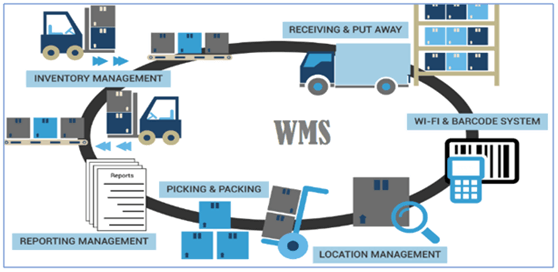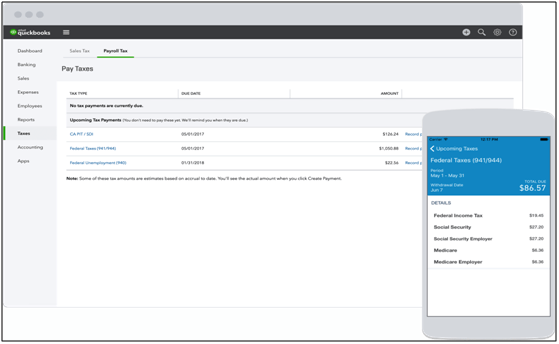The food and beverage distribution industry has been in turmoil for the past few years. Mass consolidation at every level has made for a tougher market, with challenges on seemingly every front.
Table of Contents
Understanding and Meeting Demand
Perhaps one of the largest issues faced in the food distribution industry is that of supply and demand. Food and beverage trends seem to change more frequently than the weather. Consumer tastes, preferences, and interests can truly change on a dime. Avocado toast is out, kale is in. One day, consumers might be craving high-protein fare, another day it might be on-the-go nutritional snacks.
This issue, combined with potential surpluses or shortages from suppliers, is causing many food and beverage distributors to fall behind as major transformations take place in the industry. Additionally, incomplete or inaccurate demand projections can spell disaster for a distributor. Companies need detailed reports that show exactly where demand is coming from, as well as demand data that is easily accessible across the organization. These detailed reports will enable supply chain partners, owners, and managers to make quicker, smarter decisions.

Controlling Inventory and Costs
The food and beverage industry is extremely time-sensitive: many products need to ship and be in store by a certain date or they’re useless. So distributors must have a highly visible and effective system to control and monitor inventory data in real-time. Automation can dramatically impact all phases of inventory management, including counting and monitoring of inventory items; recording and retrieval of item storage location; recording changes to inventory; and anticipating inventory needs, including inventory handling requirements.

This is true even of stand-alone systems that are not integrated with other areas of the business, but many analysts indicate that productivity and hence profitability gains that are garnered through use of automated systems can be further increased when a business integrates its inventory control systems with other systems such as accounting and sales to better control inventory levels. This type of system also helps managers make better purchasing decisions that’ll reduce inventory costs while also moving time-sensitive products quickly and effectively.
A warehouse management system (WMS) is software and processes that allow organizations to control and administer warehouse operations from the time goods or materials enter a warehouse until they move out. Operations in a warehouse include inventory management, picking processes and auditing.

For example, a WMS can provide visibility into an organization’s inventory at any time and location, whether in a facility or in transit. It can also manage supply chain operations from the manufacturer or wholesaler to the warehouse, then to a retailer or distribution center. A WMS is often used alongside or integrated with a transportation management system (TMS) or an inventory management system.
Managing Accounts Receivables More Effectively
During start-up and slow months, many distribution companies will often be pressured to hand out “deals” with better terms for buyers. This can impact cash flow severely and make distributors fall behind in paying sales reps or suppliers. So managing accounts receivables can quickly make the difference between staying afloat or sinking fast.

Create a solid credit policy will managing your accounts receivable without a credit policy, If you have a policy in place, it’s probably a good time to review it. Revise your credit policy to include instructions about qualifying a customer for an account. Your credit policy should also include information about how accounts are to be collected and when they should be declared bad debt. The policy should lay down the law about other aspects of accounts receivable: early payment discounts, late payment penalties, and even the text for reminder notifications.
Few companies invest heavily in the technology they use to manage accounts receivable. Many smaller businesses use the basic features of the accounting software they’ve adopted, such as QuickBooks or another program.

Not all technology is created equal, however. Upgrading your systems and programs could help you manage accounts receivable more effectively. Newer technologies allow you to do things like automate reminder messages to send out to your customers. They’ll also do a better job of tracking who has paid and who hasn’t.
Optimizing Delivery Schedules and Routes
To stay competitive and reduce waste, distributors within the food and beverage industry should be constantly seeking more effective means for delivering inventory to end-retailers and reducing expenditures on fuel costs, as well as labor costs involved in loading, unloading, and (depending on the distributor) merchandising.
One effective way to achieve scheduling and route optimization is to use modern communication technology and tracking equipment. New technologies enable distributors to be more responsive to supplier and vendor demands by streamlining interactions and enabling partners to make quick changes to their scheduled deliveries. Some distributors may even consider offering discounts reflective of inventory they’re trying to unload in a given area to further optimize delivery schedules.

Route Optimization takes the work of designing optimal delivery routes out of the hands of dispatchers, allowing them to spend their time on other important tasks. By intelligently factoring the capacity of available vehicles, the cost of drivers (whether by hour, mileage, etc.), customers’ locations and promised delivery time windows, the system helps companies manage their distribution in the way that’s most efficient and cost-effective.
The full content is only visible to SIPMM members
Already a member? Please Login to continue reading.
References
Ben Aston. (2018).”10 Best Communication Tools For The More Effective Team Collaboration”. Retrieved from https://www.google.com.sg/amp/s/thedigitalprojectmanager.com/best-communication-tools/amp/, assessed 16/09/2019
Karin Wang Hui Jian, ADPSM. (2019). “Blockchain for Visibility in the Food Supply Chain”. Retrieved from SIPMM: https://publication.sipmm.edu.sg/blockchain-visibility-food-supply-chain/, accessed 11/09/2019.
Kenny Johnston. (2019). “Account Receivable Management”. Retrieved from https://www.billgosling.com/blog/how-to-manage-account-receivable-more-efficiently, accessed 13/09/2019.
Leong King Fatt Cyrus, DLSM. (2019). “Integrated Logistics Practices for the Food Industry”. Retrieved from SIPMM: https://publication.sipmm.edu.sg/integrated-logistics-practices-food-industry/, accessed 13/09/2019.
Midlothian Economic Development. (2018). “4 Food Distribution Industry Challenges and How to Overcome Them”. Retrieved from https://info.midlothian-tx.org/blog/4-food-distribution-industry-challenges-and-how-to-overcome-them, accessed 12/09/2019
Peter Chalem. (2016). “The Top 5 Challenges for Food and Beverage Distribution”. Retrieved from https://alfapeople.com/the-top-5-challenges-for-food-and-beverage-distribution/, accessed 11/09/2019.

